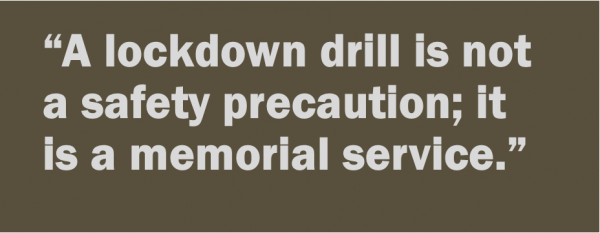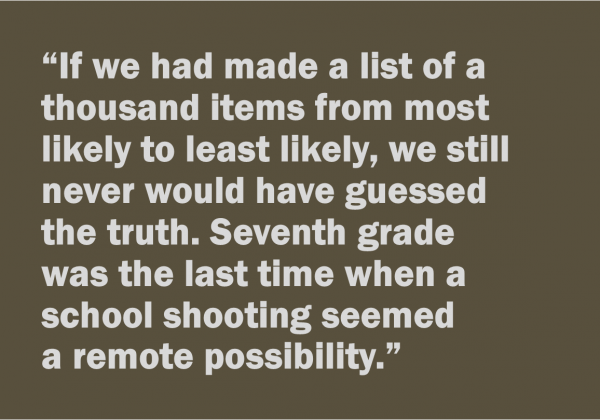PERSPECTIVE - The Sky Hasn’t Fallen: Numbers Support Adoptee Equality
/by Karen Caffrey Currently, the legislature is considering House Bill 5408, which would restore the right of adult adoptees born and adopted before October 1, 1983, and their adult children and grandchildren, to obtain the adoptee’s original birth certificate. This right was restored to post-October 1, 1983 adoptees in 2014.
Contrary to popular understanding, for much of Connecticut’s history both adult adoptees and adoptive parents had an absolute right to the adoptee’s original birth certificate. This was the law until 1975. This misperception is due to the history of secrecy and shame surrounding “out-of-wedlock” pregnancies, resulting in many young women being essentially forced to relinquish their infants. While the woman’s identity was hidden from the public, the law deemed it important for the adoptee and their family to know the adoptee’s biological origins. 
From 1919-2011, Connecticut finalized 62,480 adoptions. About 39,600 of them are older, pre-1983 adoptees whose rights would be restored under HB 5408. Many are in their 50s, 60s and even 70s. The way the law reads now, pre-1983 adult adoptees must go through an expensive, time-consuming and exhaustive legal process to either obtain the birth parents consent to release the original birth certificate, or to confirm the birth parent has died. (All Connecticut adoptees may obtain their original birth certificate once the birth parent is deceased.) It’s basically an expensive race to the grave.
There is overwhelming support for HB 5408. Over 200 testimonies in support of the bill were submitted by adoptees, birth and adoptive parents and adoption professionals. The bill has been endorsed by the Connecticut State Medical Society, the Connecticut Council on Adoption, and Concerned United Birthparents, the only national birthparent organization. HB 5408 has 47 bipartisan legislator cosponsors.
It’s been approved by both the Judiciary and the Appropriations Committees. By enacting this law, Connecticut would join three of our New England neighbors (Maine, New Hampshire and Rhode Island) and become the tenth state in the nation to restore equality to its adopted citizens.
Many adoptees are simply abandoning statutory avenues to search by other means, particularly by using consumer DNA testing, which only requires a saliva sample. This technology is rapidly ending genetic secrecy, even for those who h aven’t tested their own DNA. An adoptee who tests could find “Cousin Suzie” (who got a DNA test as a Christmas present), who in turns calls the birth mother before she even knows the adoptee is looking for her. This is much less private than an adoptee directly contacting her known birth mother who is named in the original birth certificate, as would be the case if HB 5408 becomes law.
aven’t tested their own DNA. An adoptee who tests could find “Cousin Suzie” (who got a DNA test as a Christmas present), who in turns calls the birth mother before she even knows the adoptee is looking for her. This is much less private than an adoptee directly contacting her known birth mother who is named in the original birth certificate, as would be the case if HB 5408 becomes law.
So what’s the problem? Some are concerned about the very small percentage of women who may have kept the relinquishment of their infant a secret from their families, and who don’t want it to be discovered. Data collected by the American Adoption Congress from eight states during the period between 2000-2011 indicates that approximately 1 out of 2000 birth mothers will refuse contact by their adult offspring. (In Connecticut, not one of the 35 “Contact Preference Forms” filed under the 2014 law indicates the birth mother prefers not to be contacted.) The vast majority of birth mothers welcome at least a phone call, if not more extensive contact and exchange of information, with the adult adoptee. Neither in Connecticut nor other states that have enacted these laws have the feared, catastrophic consequences come to pass.
We can only have compassion for the very human fear of being rejected or judged if someone discovers our hidden secret. Some birth mothers say, “I’m so ashamed of what I did; I thought you would be mad at me for not telling you all these years; I was afraid you would judge me; I didn’t want you to think less of me; I don’t want to remember that time in my life”.
And yet despite these fears and difficulties, all over the country birth mothers, birth fathers and adult adoptees are finding each other, facing their secrets, confronting their fears and handling their lives like the adults that they are. Surprisingly, we find that our families love us, even with our flaws and imperfections. They may be surprised, they may be angry, and they may feel hurt, yet they continue to love us (and we continue to love them).
A final consideration: most adoptee rights advocates are women. We are women connecting with other women. We are women seeking our biological roots, our identity, our family medical history (to help ourselves and our own children) and our heritage. We do not want to hurt our sisters in womanhood, or our fathers, or other biological family members. We simply want to have the same freedom and equality as all other citizens to know who we are and where we came from.
__________________________
Karen Caffrey, LPC, JD is the President of Access Connecticut Now, Inc., a 501(c)(4) nonprofit organization of adoptees, birth and adoptive parents and adoption professionals dedicating to restoring the right of adult adoptees to obtain their original birth certificate. She may be reached at the organization’s website, www.accessconnecticut.org or at 860-306-0900.




 therefore are not necessary to fulfill the requirements of Section 2. The last time the immigration question was asked in a decennial census was in 1950.
therefore are not necessary to fulfill the requirements of Section 2. The last time the immigration question was asked in a decennial census was in 1950.
 Enter the Benefit Corporation (known as B Corp). There are two types of B Corps. One is a certification through B Lab, an NGO that codified the structure. The other is a type of business incorporation, and is obtained by application through the Secretary of the State. Both give legal protection to leaders who consider the interests of all stakeholders - not just shareholders or a board of directors - when making business decisions.
Enter the Benefit Corporation (known as B Corp). There are two types of B Corps. One is a certification through B Lab, an NGO that codified the structure. The other is a type of business incorporation, and is obtained by application through the Secretary of the State. Both give legal protection to leaders who consider the interests of all stakeholders - not just shareholders or a board of directors - when making business decisions. Our work is crucial to the stability of our state’s finances, securing federal funding, and ensuring state agency compliance. The work we do on whistleblower cases, in conjunction with the Attorney General, provides all citizens the opportunity to expose waste, fraud and corruption without threat of retaliation.
Our work is crucial to the stability of our state’s finances, securing federal funding, and ensuring state agency compliance. The work we do on whistleblower cases, in conjunction with the Attorney General, provides all citizens the opportunity to expose waste, fraud and corruption without threat of retaliation.
 However, when it came to their personal finances, 88 percent of those surveyed said they wish they started to save for their overall financial goals much sooner.
However, when it came to their personal finances, 88 percent of those surveyed said they wish they started to save for their overall financial goals much sooner. It is impossible to assess the AT&T / Time Warner merger without taking into consideration the impact that the Trump Administration FCC’s proposed net neutrality rollback would have. AT&T is the third-largest broadband provider in the United States, with 15.7 million subscribers. And they own DirecTV, by far the largest satellite television provider, with over 20 million subscribers. If the Trump Administration is successful in fully implementing its net neutrality repeal, but is unsuccessful in blocking the AT&T / Time Warner merger, it would create a nightmare scenario for consumers.
It is impossible to assess the AT&T / Time Warner merger without taking into consideration the impact that the Trump Administration FCC’s proposed net neutrality rollback would have. AT&T is the third-largest broadband provider in the United States, with 15.7 million subscribers. And they own DirecTV, by far the largest satellite television provider, with over 20 million subscribers. If the Trump Administration is successful in fully implementing its net neutrality repeal, but is unsuccessful in blocking the AT&T / Time Warner merger, it would create a nightmare scenario for consumers.
 Opportunity: Talent
Opportunity: Talent  Making the Connection
Making the Connection But those weren’t the answers I was really looking for. I didn’t want a death count. I wanted an estimate of the number of years of life lost. I wanted a numerical answer to how many times over the next 40 years their parents would stare into the smiling eyes of their 5-year-old’s school photo and try to imagine them with acne or facial hair or wedding dresses. I wanted a hypothesis at the number of prescriptions filled out for PTSD from the other students. I didn’t want to know the weapon. I wanted to know how he had come across it. I wanted to know how their lockdown drill had failed as naively as a duck-and-cover method from the atomic bomb.
But those weren’t the answers I was really looking for. I didn’t want a death count. I wanted an estimate of the number of years of life lost. I wanted a numerical answer to how many times over the next 40 years their parents would stare into the smiling eyes of their 5-year-old’s school photo and try to imagine them with acne or facial hair or wedding dresses. I wanted a hypothesis at the number of prescriptions filled out for PTSD from the other students. I didn’t want to know the weapon. I wanted to know how he had come across it. I wanted to know how their lockdown drill had failed as naively as a duck-and-cover method from the atomic bomb.
 I am a girl who is going to be a teacher. Teachers don’t take an oath to protect and serve, yet they are the front lines in a battle that America is losing. There isn’t a single teacher – or student – in America who hasn’t wondered what they would do in a school shooting. I’d be willing to bet that most of the teachers, administrators, and security guards around the country have come to the same grim conclusion: that there is a unspoken clause in their job description.
I am a girl who is going to be a teacher. Teachers don’t take an oath to protect and serve, yet they are the front lines in a battle that America is losing. There isn’t a single teacher – or student – in America who hasn’t wondered what they would do in a school shooting. I’d be willing to bet that most of the teachers, administrators, and security guards around the country have come to the same grim conclusion: that there is a unspoken clause in their job description. But why girls?
But why girls? Confidence, we’ve heard, comes from execution. Early results from
Confidence, we’ve heard, comes from execution. Early results from 



























